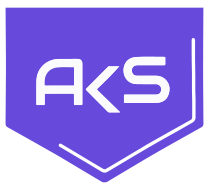Top Technologies Shaping India’s ITS Landscape
Artificial Intelligence: Steering the Future of Mobility
Introduction: The AI Imperative in Urban Mobility

India’s urban transformation is unprecedented. By 2047, over 600 million citizens will reside in urban regions, and vehicle ownership is expected to triple. However, this rapid expansion also leads to mounting congestion, traffic-related fatalities, parking challenges, and escalating emissions, costing the country nearly 5-7% of its GDP annually. Traditional infrastructure responses are proving insufficient
What India needs now is intelligent infrastructure with Artificial Intelligence (AI) integrated into Intelligent Transportation Systems (ITS). AI offers capabilities far beyond automation: predictive analysis, real-time adaptive systems, and the ability to learn from urban mobility patterns. AI is not merely an addition to traffic systems—it is the command center for India’s next-gen mobility.
2. Market Trends: AI’s Expanding Footprint in ITS
The Indian ITS market, as per the ITS India Forum Market Report (2025), is projected to grow at a CAGR of 14.79% between 2024 and 2035. AI-led systems such as Advanced Traffic Management Systems (ATMS), Vehicle-to-Everything (V2X), and AI-powered surveillance will be leading this growth.
Table: Key AI-Enabled ITS Segments (2023–2047)

III. Real-World AI Applications in ITS
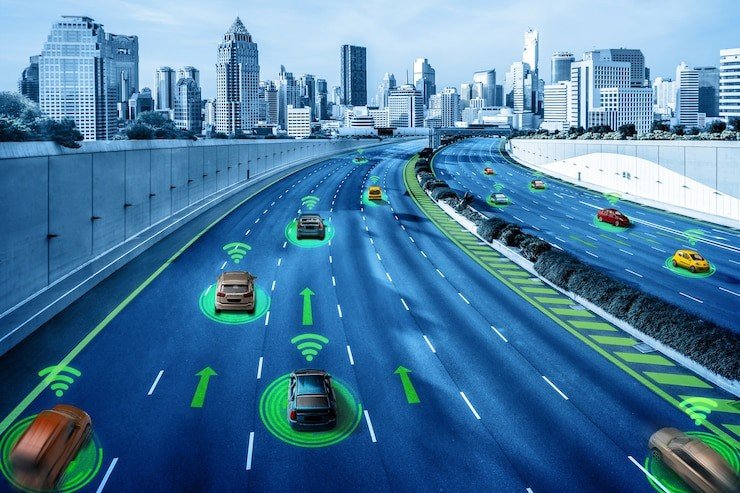
In India, AI is already enhancing urban mobility outcomes across various areas. In cities like Pune and Bengaluru, AI-based Adaptive Traffic Signal Control (ATSC) systems have reduced travel times up to 25% on selected routes. The Video Incident Detection and Enforcement System (VIDES) deployed by NHAI detects up to 14 different traffic violations in real time, ranging from animals on the roads to stalled vehicles.
With the ITS India Forum, Delhi’s public transport body, DIMTS, utilizes AI to optimize bus fleet rotation and predict delays, enhancing punctuality and the overall commuter experience. In toll management, AI is now employed to detect fraudulent vehicle IDs and evasive driving behaviors with over 95% accuracy, thus improving revenue collection and transparency.
Even environmental benefits are measurable. In Ahmedabad, AI-enabled traffic routing has led to an 11% reduction in CO₂ emissions by guiding vehicles away from congested corridors.
4. The Policy and Regulatory Landscape
India’s AI integration in ITS is supported by an evolving multi-tiered policy framework. The National Strategy on AI (2018) identified mobility as a priority sector. The Smart Cities Mission encourages the adoption of AI-enabled surveillance and transport analytics. Legal provisions under the Motor Vehicles (Amendment) Act, 2019, authorize AI-generated digital evidence.
In 2023, MoRTH published ATMS standards that formally required AI-based real-time traffic monitoring systems. Additionally, the National Clean Air Program (NCAP) has prioritized AI-driven Intelligent Transportation System (ITS) tools in high-pollution urban areas.
Together, these policies are creating a fertile environment for the scaled adoption of AI in mobility.
Enabling Conditions for Scaled AI Adoption
To mainstream AI in ITS, India needs both technology and institutional enablers:
- Data Infrastructure
- Establish an Open Mobility Data Exchange under the NIC, BIS, or MeitY.
- Mandate standardized APIs for vehicle OEMs, Infra Operators, and ITS vendors.
- Edge AI Deployment
- Enable on-device AI computation at traffic lights, intersections, and toll plazas to reduce bandwidth latency.
- Mobility AI Sandboxes
- Designate five cities like Delhi, Pune, Indore, Hyderabad, and Kochi as testing zones for AI pilots under regulatory relaxation.
- Capacity Building
- Create a pool of at least 10,000 ITS professionals trained in AI applications by 2030 through the ITS India Forum’s capacity-building programs, IITs, NITs, and NIC-accredited programs.
- AI Governance & Ethics
- MoRTH should collaborate with MeitY and NITI Aayog to develop a Code of Ethics for AI decision-making in mobility.
- Challenges and Strategic Enablers
Despite positive momentum, India’s AI-ITS journey faces structural gaps that need to be addressed with urgency.
AI requires vast, clean, and standardized datasets. At present, traffic data across cities is fragmented. Establishing an Open Mobility Data Exchange under the NIC, BIS, or MeitY would enable developers, agencies, and startups to build scalable, interoperable AI models.
Infrastructure constraints are another barrier. To reduce latency and improve real-time accuracy, AI computation needs to shift toward the edge on traffic poles, signal boxes, and toll plazas. Infrastructure operators need to be fully integrated into the AI-enabled system.
Human resource development is equally crucial. By 2030, India will require at least 10,000 trained AI-for-Mobility professionals working within urban local bodies, state transport departments, and municipal command centers.
Finally, AI systems must operate within an ethical and legal framework. Given the use of facial recognition, license plate tracking, and behavioral data, India must develop privacy-first AI governance protocols specific to transport.
VI. Public-Private Partnerships and Innovation Push
Private sector innovation is thriving. Companies like Netradyne
and Awiros are building AI platforms for traffic analytics, and
telecom giants like Jio and Airtel are investing in cloud-backed
mobility AI solutions.
Public-private collaborations are delivering results. In Pune’s smart corridor, real-time data from private ITS firms is now integrated into the city’s Integrated Command and Control Center (ICCC), improving emergency response and route optimization.
A dedicated AI Mobility Innovation Fund worth ₹1,000 crore could catalyze broader deployment across India’s Tier 2 and Tier 3 cities. Additionally, India can benefit from bilateral AI partnerships—such as with Japan’s UTMS, which offers AI traffic forecasting models already tested in dense megacities.
VII. Conclusion: Toward a National AI for Mobility Mission
Artificial Intelligence is no longer optional in urban transport—it is foundational. Its ability to synthesize data, make instant decisions, and predict system-wide outcomes makes it indispensable for India’s mobility future.
India must now establish a National AI for Mobility Mission (NAIMM) under the PM Gati Shakti framework. This mission should unify AI deployment across public transit, highways, tolling, and safety systems, backed by R&D funding, standardization, and outcome-based governance.
By 2030, India must aim to:
- Integrate AI-based ITMS or ATMS in 100 cities
- Reduce urban travel times by 30%
- Cut transport-related fatalities by 50%
- Lower road emissions by 30%
By embedding intelligence at the heart of mobility, India has the opportunity to move faster, smarter, greener, and safer.
Vehicle-to-Everything (V2X) Communication Systems
Overview
Vehicle-to-Everything (V2X) communication is ushering in the next era of transport innovation by enabling real-time, bidirectional communication between vehicles and their surrounding ecosystem. This includes communication with other vehicles (V2V), infrastructure (V2I), networks (V2N), pedestrians (V2P), and the cloud (V2C). This multi-layered communication environment facilitates collaborative traffic behavior and forms the foundation of connected and autonomous mobility.
In India, V2X is emerging as the fastest growing ITS domain, expected to grow at a CAGR of 14.79% through 2047. Pilot deployments in Maharashtra, Delhi, and Tamil Nadu have demonstrated early benefits in signal prioritization, emergency vehicle routing, and pedestrian safety zones. With road fatalities in India exceeding 150,000 per year, V2X holds transformative potential for accident reduction.

Context
Technologies such as Dedicated Short-Range Communication (DSRC) and Cellular-V2X (C-V2X) are currently being evaluated for nationwide deployment. DSRC enables low-latency exchanges with traffic signals and roadside units, while C-V2X, aided by 5G, allows data exchange between vehicles and cloud systems for navigation, hazard alerts, and system updates.
In commercial logistics, V2X is expected to revolutionize fleet coordination. Real-time tracking of trucks, automated tolling, and predictive maintenance alerts will enhance efficiency and reduce downtime. Urban freight corridors are prime candidates for V2V and V2I implementation, particularly in Tier I cities where congestion and route unpredictability reduce freight margins.
Moreover, V2X plays a vital role in enabling Level 2 and Level 3 autonomous driving capabilities. Vehicles can receive real-time information on signal phases, pedestrian crossings, and even road surface conditions, which greatly enhances driver assistance systems. Urban testing zones in Pune and Hyderabad are experimenting with these technologies, working with OEMs and telecom providers to establish proof-of-concept corridors.
Challenges
Challenges include high cost of onboard units, lack of unified national standards, and spectrum allocation policies. However, the Production Linked Incentive (PLI) scheme under Make in India is already stimulating domestic development of communication modules and sensors, potentially bringing down costs over the next five years.
Roadmap Ahead
By 2030, V2X is expected to be an embedded feature in all newly manufactured smart vehicles, especially with OEMs like Tata, Mahindra, and Ashok Leyland collaborating on vehicle connectivity. India’s vision of zero-accident mobility and seamless multimodal integration will rest heavily on the widespread adoption of V2X communication.
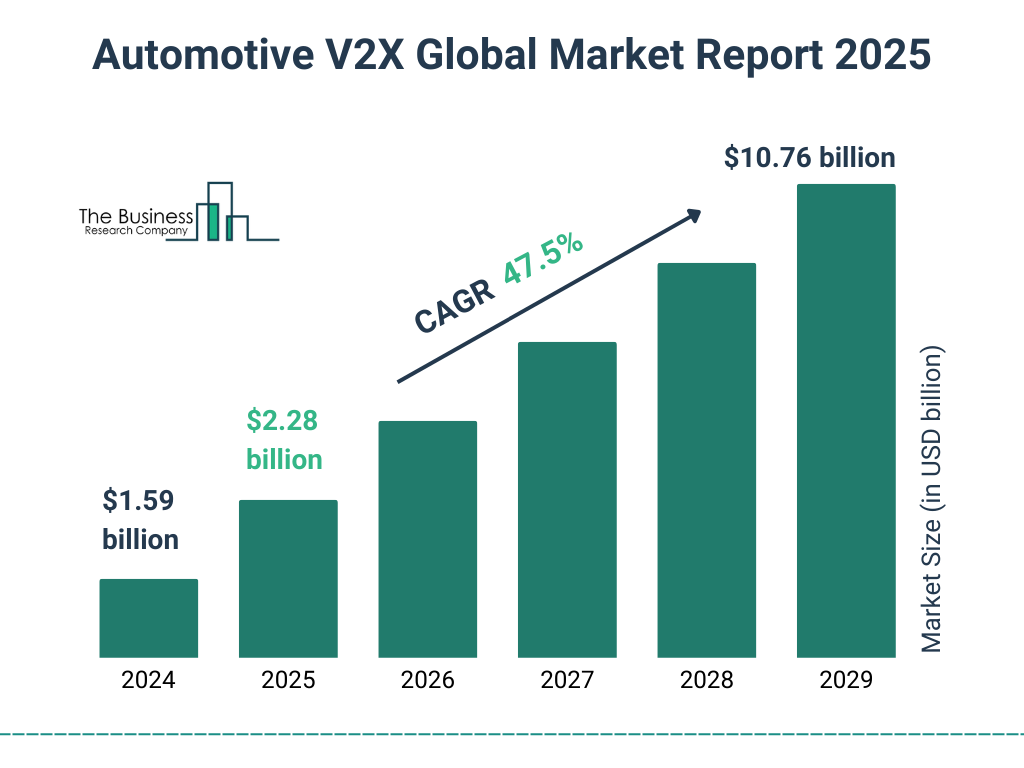
Public Transport Management Systems (PTMS)
Overview
Public Transport Management Systems (PTMS) are digital platforms that optimize how city and regional public transport services operate. Designed for high-volume systems like city buses and metro networks, PTMS integrates real-time tracking, automated fare collection, scheduling, and passenger communication—all aimed at increasing efficiency, reducing operational costs, and enhancing the commuter experience.
Current Landscape in India

PTMS has become increasingly visible in India’s urban centres. Bengaluru’s BMTC, for instance, uses PTMS to manage over 6,000 buses, integrating GPS-based location tracking, predictive maintenance, and incident alerts. Similar deployments are active in cities like Bhopal, Surat, Chennai, and Pune under the Smart Cities Mission, where PTMS connects with ICCCs for better fleet and emergency coordination.
Core Functionalities
PTMS brings together multiple features into a single ecosystem: Automatic Vehicle Location Systems (AVLS) track real-time fleet positions and enable better dispatching. Passenger Information Systems (PIS) provide real-time ETAs via digital displays and mobile apps. Automated Fare Collection (AFC) has modernized ticketing with smartcards, QR codes, and UPI-based payment, improving both convenience and accountability.
Benefits to Commuters and Operators
The introduction of PTMS has helped improve punctuality, reduced fleet idle time, and increased passenger confidence in public systems. It provides actionable data for operators to optimize routes, reallocate vehicles, and reduce maintenance costs. Integration with the National Common Mobility Card (NCMC) also supports unified travel across buses, metros, and future mobility platforms.
Challenges and Considerations
Despite its advantages, PTMS deployment faces hurdles such as high upfront infrastructure costs, lack of uniformity across different states, and occasional resistance from informal transport operators. Internet connectivity and data silos further limit its real-time effectiveness in some regions.
Way Forward
The next generation of PTMS will include AI-enabled demand forecasting, energy usage tracking for electric buses, and deeper integration with Mobility-as-a-Service (MaaS) platforms. As Indian cities strive toward cleaner and smarter public transport, PTMS will be central to building data-driven, people-centric systems.
Electronic Toll Collection (ETC) Systems
Overview
Electronic Toll Collection (ETC) systems have redefined highway and corridor management in India by transitioning from manual toll booths to automated, cashless solutions. These systems use technologies like RFID (notably FASTag), Automatic Number Plate Recognition (ANPR), Automatic Vehicle Classification (AVC), and increasingly GPS-based tolling to streamline the tolling experience, reduce delays, and enhance transparency.
Deployment in India
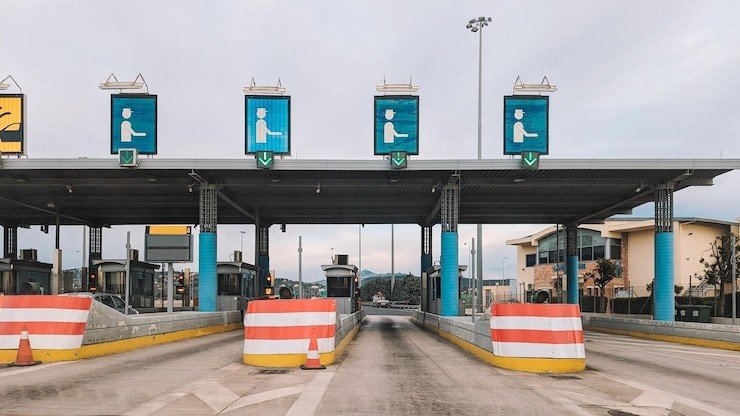
With the launch of FASTag in 2016 and its mandatory nationwide adoption in February 2021, ETC became India’s most widely adopted ITS solution. By 2023, over 95% of toll transactions across National Highways were conducted via ETC. This resulted in up to 70% reduction in wait time at toll plazas, a significant decrease in fuel consumption, and improved logistics efficiency for freight operators.
Key Technologies and Operations
- RFID (FASTag): Pre-paid tag linked to bank accounts for seamless toll deduction.
- ANPR: Enforces toll compliance and detects violators.
- AVC: Automatically classifies vehicles for tiered pricing.
- GPS-Based Tolling: Under pilot, eliminates physical booths and charges per kilometers
Strategic Benefits
- Saves time and fuel.
- Reduces human error and revenue leakage.
- Enhances highway throughput and logistics planning.
Challenges and Gaps
- Connectivity failures in rural zones.
- Tag tampering and low compliance on state roads.
- Equipment calibration and interoperability issues.
Future Outlook
ETC is evolving into a cloud-integrated, AI-powered framework. The government plans a full shift to GPS-based tolling by 2026, opening the door for congestion pricing and dynamic toll models.
Integrated Command and Control Centres (ICCC)
Integrated Command and Control Centres (ICCCs) are centralized digital hubs that monitor and coordinate urban infrastructure and services. Acting as the brain of a smart city, these centres combine real-time data feeds from transport, civic utilities, surveillance systems, and emergency services, enabling timely responses and proactive governance

Role in Urban Governance
By 2023, more than 100 cities in India had established ICCCs through the Smart Cities Mission. These centres allow decision-makers to access information from multiple departments on a single screen—reducing delays, duplication, and miscommunication. In mobility, ICCCs connect directly with ATMS and PTMS platforms to manage congestion, support emergency routes, and optimize transport networks in real time.
Application During Emergencies
ICCCs proved their versatility during the COVID-19 crisis by transforming into pandemic control centres. Cities like Pune and Surat used ICCCs to monitor containment zones, hospital bed availability, and vaccination logistics—all while continuing routine civic monitoring functions.
Data Integration and Governance
One of the key strengths of ICCCs lies in their ability to synthesize data from geographically dispersed and otherwise disconnected systems. Geographic Information System (GIS) mapping, traffic camera feeds, and service complaints from citizens converge into unified dashboards, enabling data-driven governance and long-term urban planning.
Lorem ipsum dolor sit amet, consectetur adipiscing elit. Ut elit tellus, luctus nec ullamcorper mattis, pulvinar dapibus leo.

Challenges and Opportunities
The implementation of ICCCs is not without obstacles. High capital expenditure, data privacy concerns, and the integration of legacy systems are common barriers. Additionally, standardization across cities and departments remains a work in progress. Despite these challenges, initiatives like the National Urban Digital Mission and India Urban Observatory are setting the stage for interoperable, scalable systems.
Potential
Looking ahead, ICCCs are expected to evolve into Digital Twins—virtual city models that allow for simulation-based decision-making. With the addition of AI, blockchain, and predictive analytics, ICCCs will become the command centres of fully automated, intelligent urban ecosystems.
Advanced Traffic Management Systems (ATMS):

I. Introduction: The Urgency for Intelligent Traffic Solutions – India is home to over 1.4 billion people, with urbanization increasing at a pace never witnessed before. As cities swell and motorization intensifies, traffic congestion, road accidents, and environmental degradation have become systemic crises. According to MoRTH, India witnessed over 150,000 road fatalities in 2022—the highest in the world. Conventional traffic systems, dependent on manual signal controls and passive surveillance, are proving obsolete
In this context, Advanced Traffic Management Systems (ATMS) offer a paradigm shift—from reactive, fragmented approaches to real-time, integrated, and data-driven mobility management. ATMS, a core segment of the Intelligent Transportation System (ITS) market, is designed to enhance traffic efficiency, road safety, and urban sustainability by harnessing cutting-edge technologies including artificial intelligence, IoT, and sensor fusion.
Market Overview: India’s Expanding ATMS Landscape
ATMS is the largest and most mature segment of India’s ITS market. As per the ITS India Market Report (2025), ATMS alone accounted for ₹1,793.75 crore in 2023 and is projected to grow at a 13.2% CAGR through 2047.
Table 1: ATMS Market Performance and Forecast (INR Crore)
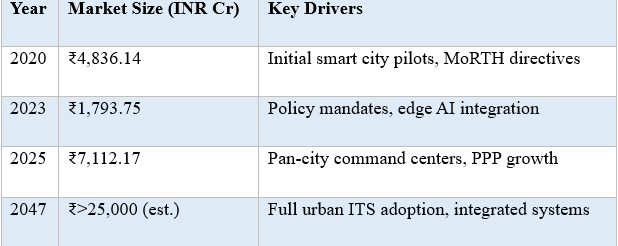
Maharashtra, Tamil Nadu, Delhi, Karnataka, and Gujarat are leading ATMS adopters. National Highways Authority of India (NHAI), state traffic police departments, and municipal bodies are collectively driving the expansion through policy incentives and implementation mandates.
III. What Constitutes an ATMS? Key Components and Capabilities
ATMS is not a singular technology—it is a suite of interconnected systems built to manage dynamic traffic environments. According to the ITS market taxonomy, ATMS includes the following sub-systems:
- Traffic Signal Control Systems – Adaptive and coordinated signal timing
- Real-Time Traffic Monitoring – Sensors and cameras for congestion analytics
- Incident Detection and Management – AI-enabled video surveillance for quick emergency response
- Dynamic Message Signs (DMS) – Variable signboards for real-time road updates
- Automatic Traffic Counter and Classifier (ATCC) – For vehicle type identification and analytics
- Emergency Call Boxes (ECB) – For direct communication with command centers
In India, these systems are being integrated under citywide traffic control rooms, highway operation centers, and Integrated Command and Control Centers (ICCCs).
- National Push: Policy and Regulatory Framework
India’s government has undertaken major reforms to catalyze ATMS adoption:
- The Motor Vehicles (Amendment) Act, 2019 made digital enforcement and surveillance legally admissible in court.
- In August 2021, MoRTH notified new rules under the Act for electronic monitoring on high-density corridors.
- The National Clean Air Programme (NCAP) mandates real-time traffic management in cities with over 1 million population.
In 2023, NHAI released new ATMS standards, introducing AI-integrated features like Video Incident Detection and Enforcement System (VIDES) capable of identifying up to 14 different traffic anomalies, including:
- Overspeeding
- Wrong-way driving
- Road obstructions
- Pedestrian intrusions
- Animal presence
These specifications have made ATMS a default requirement for all greenfield and brownfield highway projects moving forward.
- Impact: Measurable Gains from ATMS Deployments
The deployment of ATMS is already showing transformative results across Indian cities and highways.
- Traffic Flow Improvement: Adaptive signal control in Pune and Bhopal reduced average vehicle wait time by 30% at major intersections.
- Accident Reduction: In cities like Ahmedabad and Jaipur, AI-enabled incident detection systems led to a 20–25% drop in emergency response times.
- Pollution Reduction: Cities with synchronized signals and dynamic routing (e.g., Surat, Delhi) observed 8–10% CO₂ emission reduction during peak hours.
- Revenue Protection: Use of ATCC and ALPR in toll lanes has improved toll classification accuracy and reduced leakages by 12–18%.
These results demonstrate that ATMS is not merely a traffic tool—it is a cross-cutting enabler of public safety, environmental sustainability, and economic productivity.
- Challenges and Future Directions
Despite momentum, India faces critical barriers in scaling ATMS uniformly:
- Interoperability Gaps: Different vendors use different protocols; absence of standardization hampers system integration.
- Data Infrastructure: Lack of centralized real-time data exchange across departments limits the utility of predictive analytics.
- Urban-Rural Divide: Tier 2 and 3 cities lack technical and financial capacity to adopt full-fledged ATMS.
- Skilled Workforce Deficit: Municipal corporations often lack trained personnel to manage AI-based control centers.
To overcome these, a multi-pronged strategy is essential:
- Establishing a National ATMS Integration Standard under BIS
- Setting up an Open Traffic Data Exchange Platform
- Launching a Central Subsidy Scheme for Small City ATMS Projects
- Partnering with academic institutions for capacity building in ITS
VII. Case Example: B-TRAC (Bengaluru) and Tollman Integration
The B-TRAC project in Bengaluru is India’s largest ATMS deployment, covering over 200 intersections. It combines:
- AI-based adaptive signals
- 24×7 traffic camera feeds
- Public message systems
- Speed enforcement radars
Private integrators like Tollman International Pvt Ltd have brought in ECBs, DMS, ATCC, and VIDES solutions on national highways, creating smart corridors from Delhi to Lucknow and Mumbai to Nashik.
These examples underscore the potential of PPP models in accelerating adoption while localizing innovation.
VIII. Conclusion: Toward a National ATMS Rollout Strategy
India’s transportation future hinges on how intelligently it can move its people and goods. ATMS lies at the heart of this transition. With a projected market crossing ₹25,000 crore by 2047, and use cases already proving their merit, it is time for India to move beyond pilots to mass-scale rollout.
Strategic Policy Recommendations:
- Mandate AI-based ATMS in all Smart City proposals post-2025
- Develop KPI-linked funding disbursal from MoRTH to states
- Incorporate ATMS metrics into urban sustainability ratings
- Formalize ATMS deployment targets in the PM Gati Shakti plan
By embedding real-time intelligence into every lane, intersection, and corridor, India can transform traffic from a daily nuisance into a model of efficiency, safety, and innovation.
Strategic Forecasts & Recommendations Through 2047
By 2047, India’s ITS ecosystem is expected to be globally competitive, fully digitalized, and optimized by Artificial Intelligence. Based on existing trends and government strategy documents, the ITS market size is anticipated to surpass INR 1 lakh crore, with all Tier 1 and Tier 2 cities equipped with multimodal ICCCs and AI-driven mobility orchestration systems.
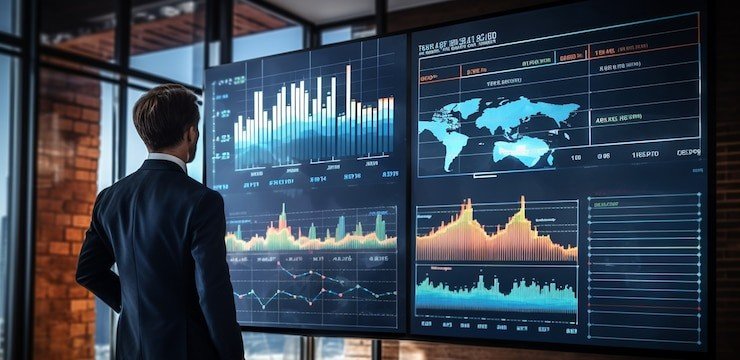
Strategic forecasts include 100% FASTag and distance-based tolling coverage, national deployment of congestion pricing systems, full AI integration into traffic law enforcement, and seamless intermodal travel enabled through single digital ticketing platforms. The adoption of predictive mobility planning using AI, IoT, and cloud data analytics will significantly reduce traffic congestion, emissions, and road accidents
The following strategic interventions are recommended to guide India’s ITS trajectory over the next two decades:
- Institutionalize Operations & Maintenance (O&M): ITS systems are often deployed without a long-term maintenance roadmap. Creating professional ITS operator roles and mandating 24×7 support with defined SLAs can enhance reliability.
- Mandatory ITS Inclusion in Urban Infrastructure Projects: All urban development and transport infrastructure should include ITS components in design and budgeting phases. This includes ATMS, adaptive signals, surveillance, and ICCC integration.
- Establish a Central ITS Data Exchange: A secure, open-access data exchange platform should be created to harmonize real-time feeds across states and agencies. This will improve inter-city coordination and support startups in building AI models.
- Upskill the Workforce: A national goal of training over 10,000 mobility engineers should be set, focused on real-time systems, cybersecurity, traffic analytics, and urban informatics. Collaboration with IITs, NITs, and international universities is vital.
- Cybersecurity & Standards Enforcement: With increased digitization, enforcement of ITS-specific cybersecurity protocols, periodic audits, and vendor testing is critical. The upcoming ITS Cybersecurity Code under NCIIPC and CERT-IN must be operationalized nationwide.
- Strengthen PPP and Innovation Ecosystems: Incentivizing private sector R&D in ITS through grants, tax incentives, and sandbox pilots can spur new products and services. Local innovations should be integrated into public infrastructure projects.
- Regional and Global Leadership: India must leverage its ITS achievements to influence regional standards and participate in global transport data exchanges. Export of Indian ITS solutions to South Asia, Africa, and ASEAN is also a key opportunity.
- Environmental Intelligence Integration: ITS planning must include environmental analytics, electric vehicle integration, and climate resilience. This supports national carbon neutrality goals.
Key Data Points:
- ITS market to exceed INR 1 lakh crore by 2047.
- 25+ states to operate multimodal ICCCs.
- 100% FASTag and AI-based tolling penetration projected.
- Central ITS Data Exchange to unify real-time feeds nationwide.
- 10,000+ professionals to be trained in ITS operations.
- Cybersecurity mandates to be enforced across public ITS deployments.
- India positioned as an ITS exporter and regulatory leader in Asia-Pacific.
- Mandatory ITS provisioning to be part of all future smart infrastructure.
By embracing long-term strategic planning, technology upskilling, and integrated policymaking, India can build an ITS ecosystem that enhances safety, supports economic growth, and positions the country as a global leader in intelligent transportation by 2047.
References
- ITS India Market Report (2025) – Transparency Market Research
- Ministry of Road Transport and Highways (MoRTH), 2023 – ATMS Guidelines
- NITI Aayog – National Strategy for Artificial Intelligence, 2018
- Smart Cities Mission Toolkit – MoHUA
- National Clean Air Programme (NCAP) Guidelines
- Delhi Integrated Multi-Modal Transit System (DIMTS)
- Pune Municipal Corporation – Smart Traffic Control Pilot
- B-TRAC Implementation Review, Bengaluru City Traffic Police
- Tollman International – Project Case Briefs



